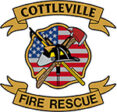![]() Many families within our fire district have children preparing to enter college. As the entity responsible for ensuring public fire education, we feel that it is our duty to provide information to families and students concerning fire safety in university dormitories, sororities, fraternity houses, and other off campus housing. The following tips were obtained from the United States Fire Administration.
Many families within our fire district have children preparing to enter college. As the entity responsible for ensuring public fire education, we feel that it is our duty to provide information to families and students concerning fire safety in university dormitories, sororities, fraternity houses, and other off campus housing. The following tips were obtained from the United States Fire Administration.
Many families within our fire district have children preparing to enter college. As the entity responsible for ensuring public fire education, we feel that it is our duty to provide information to families and students concerning fire safety in university dormitories, sororities, fraternity houses, and other off campus housing. The following tips were obtained from the United States Fire Administration.
Prevention:
- Clean up immediately after parties and take all trash outside
- Assign a non-impaired “event monitor”
- Do not overload electrical outlets
- Keep space heaters and halogen lamps away from flammables
- Put out candles and incense when unattended, you really should not use them at all.
- Extinguish all smoking materials thoroughly
- Place all smoking materials in appropriate containers, not trash cans, plastic containers or trash bags
- Don’t smoke while tired or impaired
Protection:
- Be sure all smoke detectors are in working condition
- Install new batteries at the beginning of each semester
Plan Escape Routes:
- Know where all exits are located in the building
- Practice your escape plan
Take Fire Alarms Seriously:
- Do not ignore fire alarms
- Do not wait to see fire or smoke
- Do not worry about grabbing your stuff
Tampering with smoke alarms, pulling false alarms or misusing fire protection equipment may be a criminal offense. These are dangerous pranks and should be reported immediately.
Make a Plan:
- Check to make sure your smoke alarms are working—Change the batteries
- Find all possible exits from your room or residence
- Count the number of doors between your room and each of your exits
- Make a fire escape route plan that includes two escape routes
- Practice your fire escape plan
- Perform a “home inspection” for fire and safety hazards
- Tell your roommates about your plan
Getting Out:
Feel the Door Handle
- If the door handle is hot, don’t open it
- Go to a window and call for help
- If the handle is not hot, open cautiously
- Check for smoke or fire before going out
Get Out of the Building before Phoning for Help
- Don’t take time to phone 911 before leaving
- Get out and find a phone
Pull the Alarm on Your Way Out (Only if there is an emergency)
Don’t Look for Other People or Gather up Your Stuff
- Knock on doors as you leave
- Yell “FIRE!” as you leave (Only if there is really a fire)
- Don’t hesitate or stray from your path as you leave
Crawl Low to the Floor
- Thick smoke can make it impossible to see, which is why it is important to know the number of doors between your room and the exit
- Toxic chemicals from smoke can be deadly in minutes
Close the Door Behind You
- You may help keep the fire from spreading
- You may protect your possessions from fire and smoke damage
If You Can’t Get Out, Get Someone’s Attention
- Yell and scream
- Hang a sheet from the window
- Stay low, there is less smoke and poisonous gasses close to the floor
